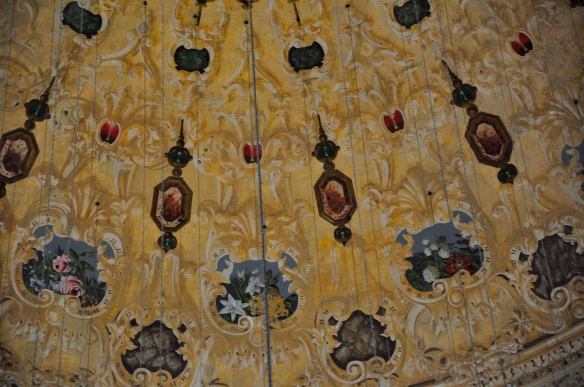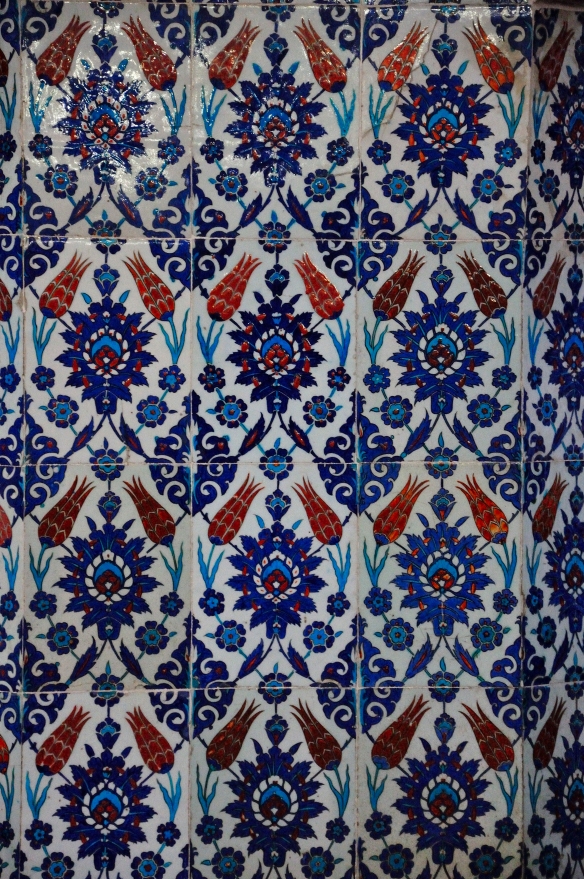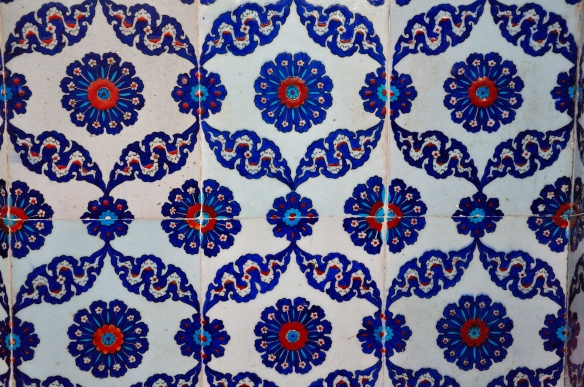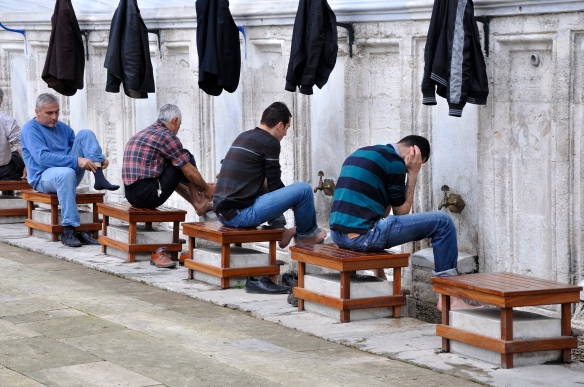Istanbul was my first introduction to Islam and the world of Islamic art. The most obvious sign of being in an Islamic culture was the call to pray five times a day. Initially this was quite a culture shock, particularly at 5.30am. But it soon became a familiar punctuation point in the day and, when in an area where we were surrounded by mosques, a thrilling and beautiful sound.
The main mosques in Istanbul are of course popular with tourists, but we were struck by how calm and peaceful even the Blue Mosque was inside and how reverently the mosques are treated. They are living buildings, with people constantly coming and going, dropping in to pray as part of their day, as naturally as they might go and do their shopping. Removing shoes at the door and walking on beautifully patterned carpets certainly contributes to the creation of this calm atmosphere.
But perhaps the most overwhelming aspect of the mosques is the extraordinary beauty of the decoration. Islam forbids the depiction of the human form and so Islamic art focuses on geometric designs, designs based on natural forms such as plants and flowers and quotations from the Quran in elaborate Arabic calligraphy. The combination of the peacefulness of the mosques and the richness of the decor is unique.
Here are some examples of Islamic art from the mosque interiors:
Mosque doors are often very old and made of wood with beautiful carved panels on them. This is usually not evident when you go in because they are frequently obscured by a leather cover to protect them from the elements. The mosque attendants are usually happy to let you look underneath to admire the decoration.
Probably one of the most distinctive features of Islamic religious art are the tiles used to decorate the interiors of the mosques. These often use floral patterns, particularly in arabesquse (repeating designs of interlacing or scrolling floral and foliage patterns) in distinctive colours, particularly deep blues and rich reds. Many of the finest tiles in the mosques of Istanbul were made at Iznik (Nicaea) – a major centre of porcelain and tile manufacture from the seventeenth century onwards.
Looking at these tiles close up I was reminded of the floral patterns on William Morris wallpaper and wonder whether he was actually influenced by Ottoman designs. Clearly Ottoman design in turn is influenced by Chinese vegetal and floral design that came into this part of Europe from the sixteenth century onwards.
Here is the cemetery to the side of the Little Aya Sofia. The original church on this site was built as a smallscale model of the main Haghia Sofia in Byzantine times, but converted into a mosque at the fall of Byzantium.
One essential element of worship in Islam is the preparatory ritual ablutions required
Worshippers gathered inside the New Mosque for Friday prayers:
 In preparation for Friday prayer a mosque official puts out carpets in the courtyard for the faithful:
In preparation for Friday prayer a mosque official puts out carpets in the courtyard for the faithful:
The interior of the domes though are among my favourite decorated items in the mosques. Added to the peaceful atmosphere and the soft light filtering through stained glass windows, the richness of the colours and variety of the repeating patterns on the domes and walls have an almost hypnotic and calming effect.
I was impressed in one mosque how even the underside of a balcony was richly decorated;














































